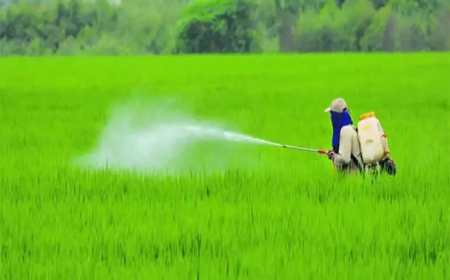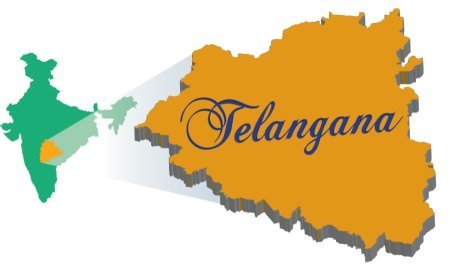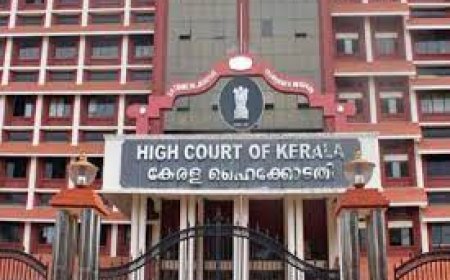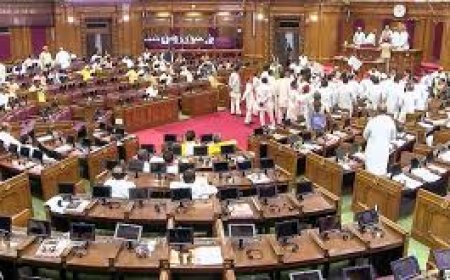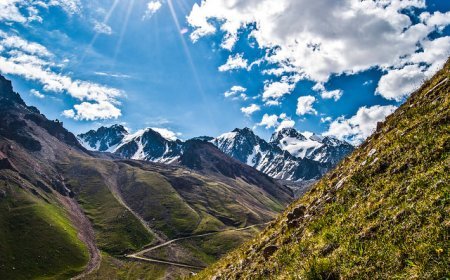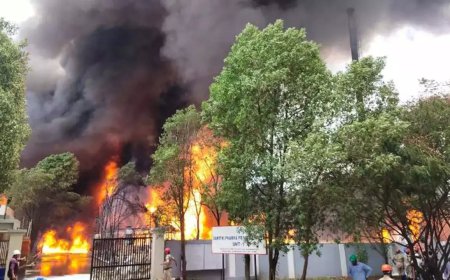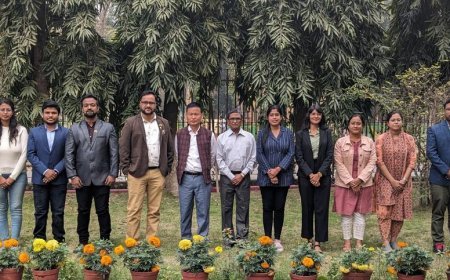June 2024: A Roundup of ENVIRONMENT & GEOGRAPHY News

Tropical Cyclone - Remal
- Name and Meaning: Cyclone Remal, named based on the World Meteorological Organisation’s protocol and suggested by Oman, means "sand" in Arabic.
- Impact: The cyclone caused significant destruction, resulting in at least 84 deaths, with 65 fatalities in India and 19 in Bangladesh. It led to food shortages and landslides.
- Response: The National Disaster Response Force (NDRF), Indian Army, and Assam Rifles participated in rescue operations and distributed essential supplies. Relief camps were set up to accommodate displaced people.
- Financial Support: The Prime Minister’s National Relief Fund was announced to aid the families of those who lost their lives
Urban Heat
- Climate Action Plan: Chennai has adopted a Climate Action Plan to tackle urban heat, setting an example for other Indian cities.
- Global Temperature Rise: 2023 was declared the hottest year on record by the World Meteorological Organization (WMO), with global temperatures exceeding pre-industrial levels by 1.45°C.
- Urban Heat Island (UHI) Effect: Cities, particularly densely populated areas, experience higher temperatures than surrounding rural areas due to the UHI effect. This phenomenon persists even at night and is exacerbated by factors like lack of vegetation and high energy consumption
Urban Water Crisis
- Water Shortages: Urban areas in India are facing severe water shortages due to over-extraction, pollution, and inadequate infrastructure.
- Initiatives: Various measures are being taken to address the urban water crisis, including the implementation of water conservation practices, rainwater harvesting, and improved water management systems.
- Impact on Population: The crisis affects millions of urban residents, leading to challenges in daily living and increased health risks
Disaster Resilient Infrastructure
- Global Cooperation: The Coalition for Disaster Resilient Infrastructure (CDRI) exemplifies the global commitment to promoting disaster-resilient infrastructure.
- Scientific Research: Investment in scientific research is essential to understand tropical cyclones and develop strategies to mitigate their impact.
- Immediate and Long-Term Planning: A two-pronged approach is needed to address cyclone-induced vulnerabilities, focusing on both immediate response and long-term infrastructure improvements
Assam Floods
- Impact: Over 6 lakh people were affected by floods in nine districts of Assam, accompanied by landslides and storms that damaged infrastructure and crops.
- Cause: Incessant rains caused major rivers like Kopili, Barak, and Kushiyara to overflow.
- Relief Efforts: Around 150 relief camps were set up, and various agencies like NDRF, SDRF, local administration, and medical teams were mobilized to aid the affected population
Marine-Protected Areas
- Threats: Illegal fishing, pollution, climate change, unsustainable tourism, limited enforcement, and conflicts with local communities threaten marine-protected areas.
- Examples: Issues like illegal fishing in India’s Gulf of Kachchh Marine National Park and unregulated tourism in Rameshwaram Marine National Park highlight the challenges faced by marine sanctuaries.
- Conclusion: International cooperation, innovative solutions, and public awareness are crucial to protect marine sanctuaries and ensure their sustainability
High Seas Biodiversity Treaty
- Purpose: The High Seas Biodiversity Treaty aims to conserve and sustainably use marine biodiversity beyond national jurisdiction.
- Need: High seas are vulnerable to overfishing, habitat destruction, climate change impacts, and lack of effective governance, necessitating international cooperation for conservation.
- Negotiation Process: Negotiations began in 2018 under the United Nations Convention on the Law of the Sea (UNCLOS), involving governments, scientists, and NGOs. The treaty will enter into force once 60 countries have signed up and legally passed the legislation
Antarctic Treaty
- Meetings: The 26th Meeting of the Committee for Environmental Protection (CEP 26) and the 46th Antarctic Treaty Consultative Meeting (ATCM 46) were held in Kochi, Kerala, in May 2024.
- Attendance: A total of 404 delegates, including representatives from all 56 Antarctic Treaty Consultative Parties (ATCP), participated.
- Key Discussions: Topics included the operation of the Antarctic Treaty System, liability issues, biological prospecting regulations, information exchange, data sharing protocols, and a sustainable tourism development framework
Green Hydrogen
- Objective: The Ministry of New and Renewable Energy (MNRE) has expanded the Strategic Interventions for Green Hydrogen Transition (SIGHT) Programme to strengthen the Green Hydrogen Mission.
- Incentive Mechanisms: Financial incentives are provided to support domestic manufacturing of electrolysers and green hydrogen production.
- Expected Outcomes by 2030: The program aims to develop a green hydrogen production capacity of at least 5 million metric tonnes per annum, add approximately 125 GW of renewable energy capacity, create over 6 lakh jobs, reduce fossil fuel imports by over ₹1 lakh crore, and avert nearly 50 MMT of annual greenhouse gas emissions
Environmental Performance Index
- Ranking: India is ranked 176th out of 180 countries in the 2024 Environmental Performance Index (EPI) with a score of 27.6. This is a slight improvement from the 2022 EPI, where India was at the bottom (180th position).
- Performance Areas: India struggles in ecosystem vitality, biodiversity and habitat, species protection, terrestrial biome, and air quality but performs better in forest conservation.
- Global Comparison: Denmark tops the list, showcasing the wide disparity in environmental performance globally
State of India’s Environment
- Key Findings: The State of India’s Environment In Figures for 2024 report highlights 2023 as India’s hottest year on record, with extreme weather events on 318 out of 365 days. The report notes poor air quality in North and East India, while the South enjoys relatively cleaner air.
- Climate Emergency: Climate change has intensified to a climate emergency in India. Greenhouse gas emissions surged by 158% from 1994 to 2019, reaching 3132 metric tonnes of CO2-equivalent.
- Glacial Melting: The Hindu Kush Himalayas’ glaciers lost 0.28 meters of water equivalent per year from 2010-2019, raising concerns over glacial lake formation and downstream threats
State of the Ocean Report
- Key Findings: The report highlights a doubling of ocean temperatures in 20 years, increased sea levels, declining oxygen levels, and rising acidity. Ocean temperature hotspots are above 2°C in the Mediterranean, Tropical Atlantic Ocean, and Southern Oceans.
- Way Forward: Recommendations include marine forest restoration, conservation, and protection of local ecosystems in Marine Protected Areas.
- Intergovernmental Oceanographic Commission: It promotes international cooperation in marine sciences to improve management of the ocean, coasts, and marine resources. It coordinates the United Nations Decade of Ocean Science for Sustainable Development 2021-2030
Global Annual to Decadal Climate Update (2024-2028)
- Predictions: The World Meteorological Organization forecasts that global temperatures will reach record highs over the next five years, with annual average global temperature rising by 1.1 - 1.9°C higher than the 1850-1900 baseline.
- El Nino and La Nina: El Nino (2023-24) is expected to transform into La Nina during 2024.
- Precipitation Patterns: The update predicts increased chances of low rainfall over North-East Brazil and wet conditions in the African Sahel. Warmer-than-usual temperatures are expected in the North Atlantic, and the Sudano-Sahelian region is likely to see above-average rainfall. There will also be reductions in sea-ice concentration in the Barents Sea, Bering Sea, and Sea of Okhotsk
Heat-Baked Chennai Can Set an Example for India
- Context:
- Chennai has been experiencing record-breaking heat, with temperatures soaring above 40°C. This extreme weather has prompted the city to implement innovative solutions to combat urban heat.
- Heat Island Effect:
- The urban heat island effect is a significant contributor to Chennai’s rising temperatures. Concrete and asphalt absorb and retain heat, leading to higher temperatures in urban areas compared to rural surroundings.
- Green Initiatives:
- Chennai has been proactive in introducing green roofs, urban forests, and increasing tree cover to mitigate the heat island effect.
- The city has also implemented water conservation measures to maintain urban greenery, which helps cool the environment.
- Climate-Resilient Infrastructure:
- The city is investing in climate-resilient infrastructure, such as reflective roofs and cool pavements, to reduce heat absorption.
- Public Awareness:
- Efforts to educate the public on heat mitigation strategies, such as using shade, staying hydrated, and reducing outdoor activities during peak heat hours, are crucial.
- Summary:
- Chennai's response to extreme heat through green initiatives, climate-resilient infrastructure, and public awareness can serve as a model for other Indian cities facing similar challenges. These measures help mitigate the urban heat island effect and promote a more sustainable urban environment .
Cities Warming Due to Effect of Urbanisation, Climate Change
- Context:
- Urbanization and climate change are major drivers of rising temperatures in Indian cities. This trend is exacerbated by the loss of green cover and increased construction activities.
- Impact on Health:
- Rising temperatures pose significant health risks, including heat strokes, dehydration, and exacerbation of chronic illnesses.
- Vulnerable populations, such as the elderly and children, are particularly at risk.
- Adaptation Strategies:
- Cities are adopting various adaptation strategies, including the development of green spaces, implementation of heat action plans, and promotion of energy-efficient buildings.
- Policy Measures:
- Urban planning policies are being revised to incorporate climate resilience, with a focus on sustainable development and reducing carbon footprints.
- Innovative Solutions:
- Use of cool roofing materials, increased urban vegetation, and creation of water bodies within cities are some of the innovative solutions being employed.
- Summary:
- Urbanization and climate change are leading to increased temperatures in Indian cities, necessitating comprehensive adaptation strategies. By implementing green spaces, energy-efficient buildings, and heat action plans, cities can mitigate the adverse effects of rising temperatures on public health and urban living .
The Last Continent Must Remain a Pristine Wilderness
- Context:
- The surge in Antarctic tourism has raised concerns about its impact on the pristine environment of the continent.
- Environmental Impact:
- Increased human presence disrupts wildlife, damages ecosystems, and risks introducing invasive species. Ship traffic pollutes waters, and tourism contributes to the global carbon footprint.
- Regulatory Framework:
- The Antarctic Treaty System provides a framework for protecting the continent, but specific regulations for tourism are still needed.
- International Cooperation:
- The Antarctic Treaty Consultative Meeting (ATCM) is working towards developing a comprehensive regulatory framework for tourism.
- India’s Role:
- India has raised concerns about the environmental impact of tourism in Antarctica and has enacted its own Antarctic Law to strengthen environmental protections.
- Future Steps:
- Strengthening environmental protection, implementing robust monitoring programs, and fostering international cooperation are crucial for sustainable Antarctic tourism.
- Summary:
- The surge in Antarctic tourism poses significant environmental risks, necessitating a robust regulatory framework. International cooperation and stringent environmental protections are essential to preserve Antarctica’s pristine wilderness for future generations .
The NITI Aayog’s Project in Great Nicobar
- Context:
- The NITI Aayog's mega project in Great Nicobar aims at significant economic development but raises concerns about its environmental and social impact.
- Ecological Concerns:
- The project could lead to deforestation, loss of biodiversity, and disruption of fragile ecosystems.
- There is a potential risk to the indigenous Shompen community, which could face displacement and loss of traditional lands.
- Development Goals:
- The project includes infrastructure development, such as ports, roads, and an airport, aiming to boost economic growth and strategic presence in the region.
- Balancing Development and Conservation:
- Comprehensive Environmental Impact Assessments (EIAs) and stringent conservation measures are necessary to mitigate ecological damage.
- Community Involvement:
- Involving local communities in the decision-making process and ensuring their rights and livelihoods are protected is crucial.
- Seismic Safety:
- Given the region's seismic activity, ensuring the structural integrity of buildings and infrastructure to withstand earthquakes is essential.
- Summary:
- The NITI Aayog’s project in Great Nicobar presents a complex challenge of balancing economic development with ecological conservation and social justice. Ensuring robust environmental protections, safeguarding tribal rights, and preparing for seismic risks are critical for sustainable development .
The Court Spells the Way in Himalaya’s Development
- Context:
- The Supreme Court of India has advocated for a sustainable development model in the Indian Himalayan Region (IHR), emphasizing an ecocentric approach.
- Current Development Practices:
- The existing development model, characterized by rampant construction and hydroelectric projects, contradicts the sustainable approach.
- Natural disasters like floods and landslides in the region are linked to aggressive development practices.
- Legal and Policy Directions:
- The Supreme Court has directed discussions on the carrying capacity of Himalayan states and the integration of disaster management in future development.
- The Court's decisions emphasize the importance of sustainable infrastructure and disaster resilience.
- Integrated Planning:
- Future development must incorporate disaster management and ensure ecological and social sustainability.
- Community Involvement:
- Engaging local communities in development planning and decision-making processes is crucial for achieving sustainable outcomes.
- Summary:
- The Supreme Court's advocacy for sustainable development in the Indian Himalayan Region highlights the need for a balanced approach that respects ecological limits and integrates disaster management. Ensuring community involvement and adopting sustainable practices are essential for the region's long-term resilience and development .
Uttarakhand Govt. to Study Risk Posed by 13 Glacial Lakes During Monsoon
- Context:
- The Uttarakhand government plans to study the risk posed by 13 glacial lakes during the monsoon season, addressing potential flood threats.
- Glacial Lake Outburst Floods (GLOFs):
- Glacial lakes are formed by melting glaciers and can pose significant flood risks if they breach.
- GLOFs can cause extensive damage to downstream areas, including loss of life, property, and infrastructure.
- Climate Change Impact:
- Rising temperatures due to climate change increase the risk of glacial melt and formation of unstable glacial lakes.
- Monitoring and Mitigation:
- The study will involve monitoring the glacial lakes, assessing their stability, and implementing mitigation measures to prevent GLOFs.
- Community Awareness:
- Raising awareness among local communities about the risks and preparedness measures is crucial.
- Summary:
- The Uttarakhand government's initiative to study and mitigate the risks posed by glacial lakes during the monsoon season is a proactive step towards disaster management. Monitoring glacial lakes, assessing their stability, and raising community awareness are essential to prevent GLOFs and protect vulnerable populations.
What's Your Reaction?







